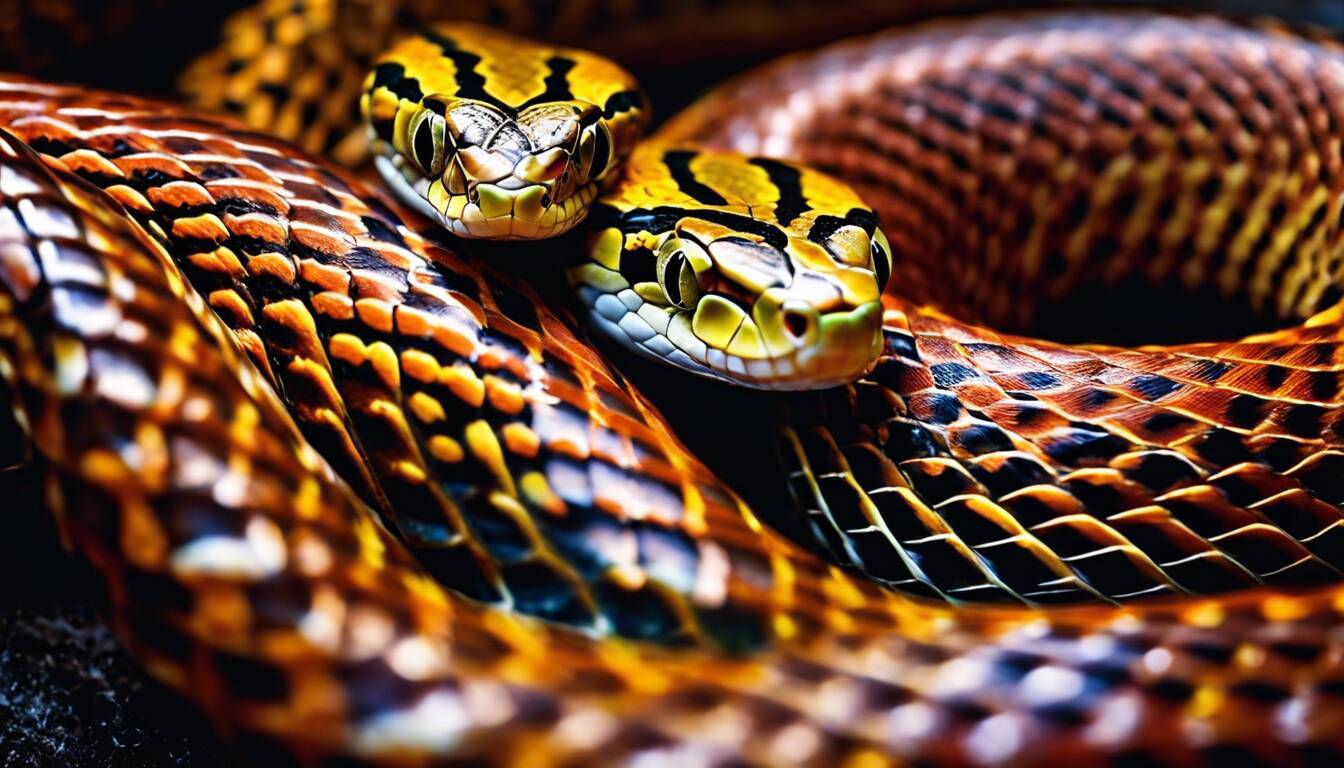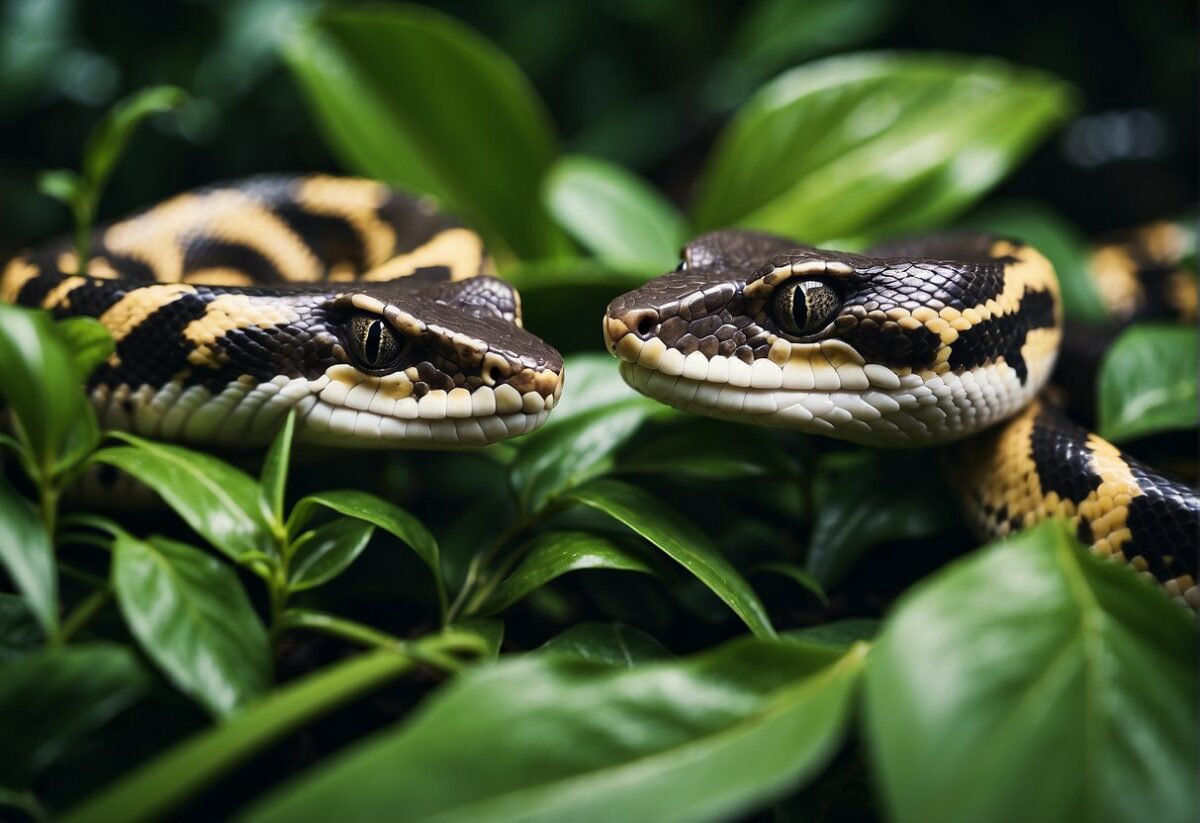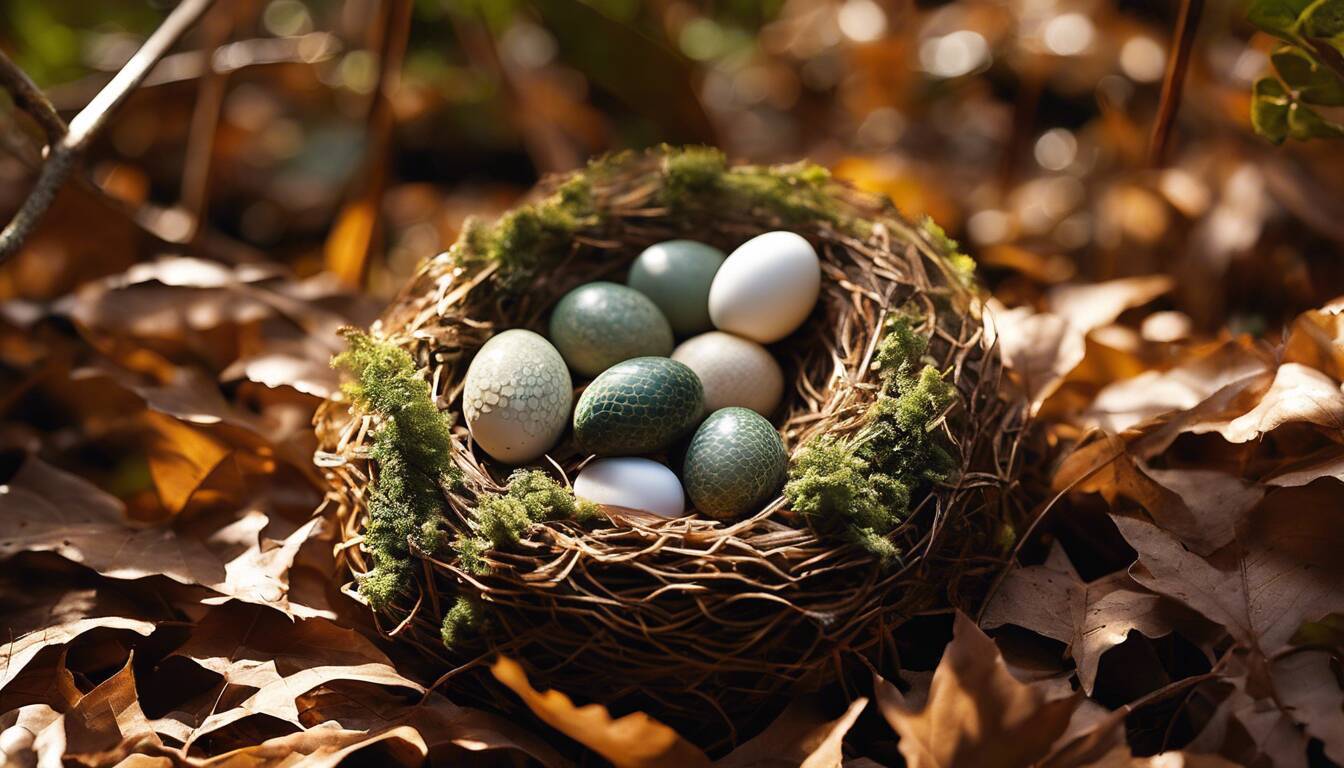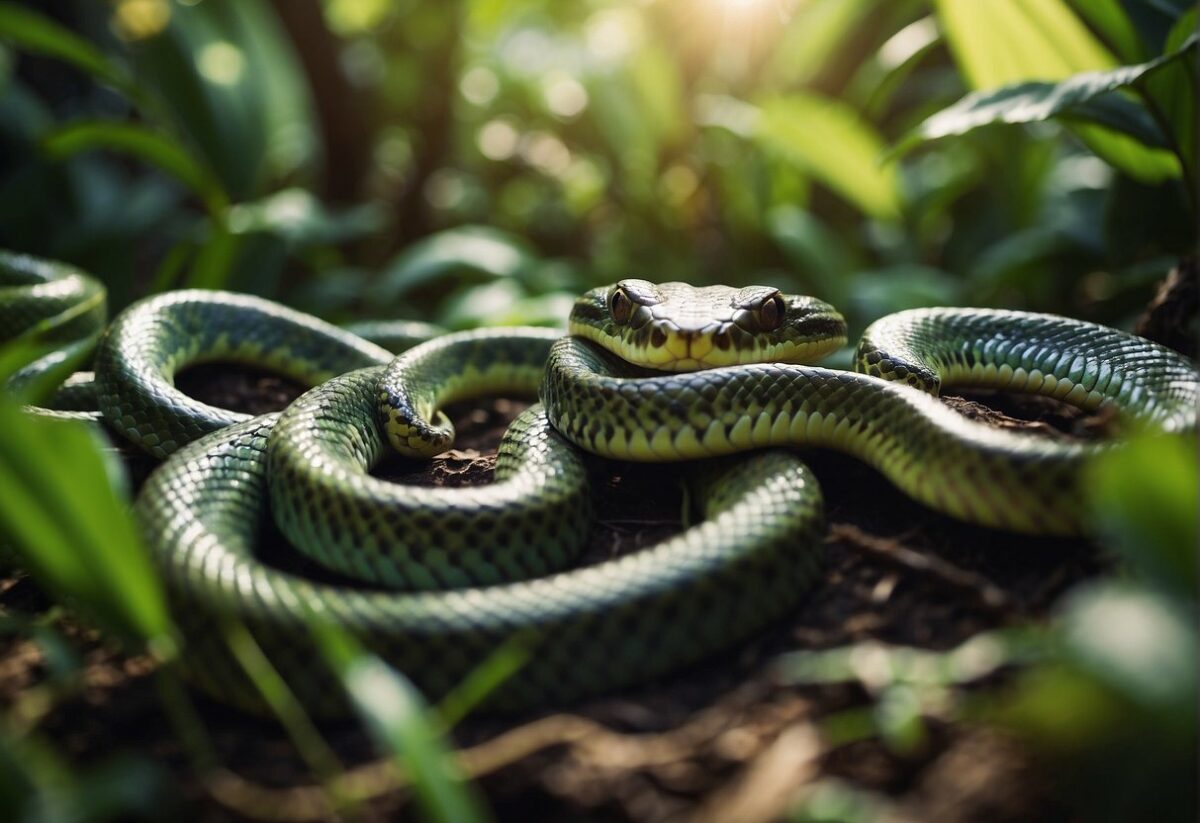Snakes have an exciting array of reproductive methods. A substantial number of snake species take part in sexual reproduction, involving males transferring sperm to females for fertilization. A seldom surprise, however, is that certain types like boa constrictors and anacondas can reproduce without a male, a process termed parthenogenesis. These fascinating snakes further exhibit diverse courtship rituals and mating strategies. Such variations are not just displays but can provide survival advantages to different species over others, contributing significantly to their evolution. Now let’s slither into what defines these behaviors.
Snakes reproduce through a process called copulation, where the male courts the female using scent trails and cues. The male then inserts his hemipenes into the female’s cloaca to fertilize her eggs. The mating rituals, duration, and reproductive methods can vary among snake species. Some lay eggs, while others give birth to live offspring.
Snake Sexual Reproduction Overview
Snakes are unique creatures, and their methods of reproduction are no exception. While most snake species reproduce sexually through the transfer of sperm from males to females, there are some exceptions to this rule. One such exception is parthenogenesis, a method observed in species like the boa constrictor and the anaconda. In parthenogenesis, females can produce offspring without the need for fertilization by a male. This remarkable ability provides an added layer of complexity to our understanding of snake reproduction.
The phenomenon of parthenogenesis in snakes showcases the incredible adaptability and resilience of these reptiles. In certain instances, when males are not readily available for mating due to geographic isolation or other factors, females have evolved the capability to reproduce asexually. This unique reproductive strategy ensures the continuity of their species even in challenging environmental conditions.
In a notable example, female Copperhead snakes have been known to reproduce through parthenogenesis in captivity, demonstrating their ability to adapt to changing circumstances when traditional mating opportunities are limited.
Moving beyond reproductive modes, it’s essential to recognize that snake sexual reproduction also encompasses an array of mating behaviors, courtship rituals, and reproductive strategies that vary significantly across different species. By exploring these varied behaviors and strategies, we gain valuable insights into the evolutionary adaptations and biological diversity within snake populations.
As we unravel the intricate tapestry of snake mating behaviors and reproductive strategies, it becomes evident that these intriguing creatures have evolved an astonishing array of techniques to ensure their survival and perpetuate their species.
Mating Behaviors in Snakes
When it comes to finding a mate, snakes employ an array of intriguing behaviors to communicate, attract partners, and compete for reproductive success. Let’s explore these mating behaviors step by step.
Courtship Rituals
Snakes engage in captivating courtship rituals as part of their elaborate mating process. Take the majestic king cobra, for example. The male king cobras display their prowess by spreading their hoods and executing swift coiling movements as a way to impress potential female mates. This mesmerizing display showcases both the strength and grace of these reptiles and serves as a form of communication to attract a suitable mate.
Courtship rituals are not just limited to king cobras; they vary widely across different species of snakes. For instance, some species might engage in intricate dances or physical displays to woo their potential mates. Each species has its unique way of conveying vital information during the courtship phase, indicating health, genetic fitness, and readiness to mate.
Scent Communication
While humans use words and body language to communicate their interest, snakes rely heavily on scent to convey attraction and readiness for breeding. Female snakes release a specific set of pheromones to attract males when they are sexually receptive. These pheromones emanate from the skin glands on the female’s back and act as a chemical signal that informs males of her reproductive status.
Male snakes use their sensitive tongues to follow this distinct scent trail, employing their acute sense of smell to locate potential mates. This unique communication method is essential for facilitating mating encounters in their natural habitats.
Mating Competition
Mating competition among snakes is a common theme in the animal kingdom. In many species, males fiercely vie for access to females, leading to intense mating competitions, often resulting in scenarios where multiple males compete for the opportunity to fertilize a single female—demonstrating the high stakes involved in reproductive success.
In some species like garter snakes, intense mating competitions can lead to the formation of ‘mating balls’, where several males swarm around a female in an attempt to fertilize her eggs. These visually striking phenomena serve as a testament to the lengths males will go to ensure their genetic legacy is passed on.
These intricate mating behaviors showcase the adaptive strategies employed by snakes in navigating the complex realm of reproduction, highlighting the fascinating interplay between instinctual drives and evolutionary imperatives.
The captivating world of snake mating behaviors unveils a myriad of evolutionary dynamics culminating in an enchanting dance from courtship to copulation.
See Related: Do Scorpions Recognize Their Owners? A Guide to Scorpion Behavior
From Courtship to Copulation
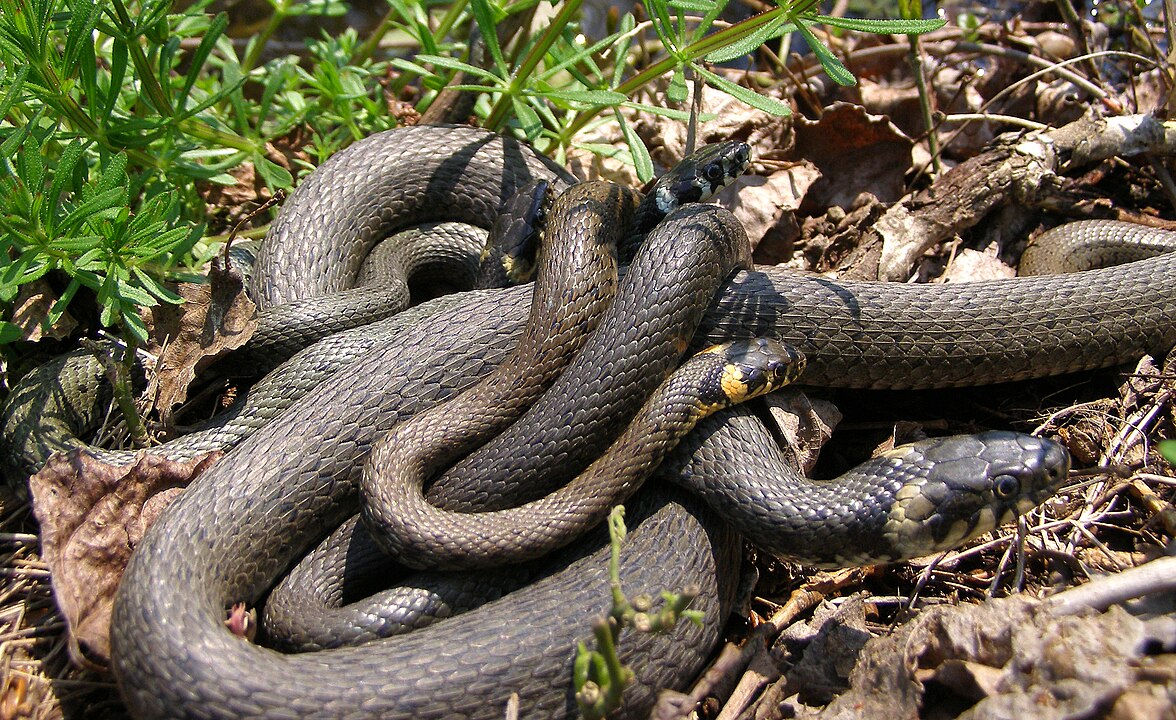
After the elaborate dance of courtship between male and female snakes, the moment arrives for them to engage in the physical act of mating. This process is just as complex and intriguing as the courtship itself, marked by a series of behaviors and physical adaptations that ensure successful reproduction.
Male Coaxing
The male snake uses a repertoire of jerks, strokes, punches, and caresses to entice the female to lift her tail and prepare for copulation. These behaviors are crucial for signaling to the female that he is ready to mate. It’s fascinating to observe how these seemingly subtle actions play a pivotal role in initiating the next phase of the mating ritual.
In some species, such as king cobras, the male’s behavior involves rapid coiling and hood spreading, showcasing strength and vitality while simultaneously asserting his intentions. The intricate communication through motion and physical displays draws a captivating picture of the strategies male snakes employ to attract potential mates. It’s akin to a carefully choreographed dance where every move has a specific purpose and meaning in the context of mating.
Mating Process
Once the female is prepared, the male uses his two reproductive organs, known as hemipenes, which are inserted into the female’s cloaca for sperm transfer. The hemipenes may have various structures such as recurved spines, cups, bumps, or folds, reflecting adaptations that enhance successful mating across different snake species.
Mating pairs can remain entwined for hours, an awe-inspiring testament to the dedication of these remarkable creatures to ensure successful reproduction. The duration of mating varies widely among snake species but can range from a few minutes to several hours. This prolonged physical connection underscores the critical nature of this stage in ensuring fertilization and successful reproduction.
For instance, male garter snakes engage in intense breeding balls involving multiple males trying to mate with a single female simultaneously. The visual spectacle of this phenomenon emphasizes the pronounced variations in mating behaviors across snake species.
Understanding this nuanced journey from courtship to copulation provides invaluable insights into the fascinating world of snake reproduction. These intricacies shed light on the extraordinary adaptations these creatures have undergone throughout their evolutionary journey and offer a glimpse into the remarkable diversity within snake mating behaviors.
Unveiling these intimate intricacies of snake mating behaviors leads us to delve into another captivating phase—the post-mating processes encompassing eggs, ovulation, and gestation.
See Related: How Many Eggs Does a Snake Lay? A Guide to Snake Reproduction
Post-Mating: Eggs, Ovulation, and Gestation
After mating, a female snake undergoes remarkable changes as she prepares for reproduction. For species that lay eggs, this process involves a complex sequence of events encompassing ovulation, fertilization, and the eventual laying of eggs. Conversely, for live-bearing species, gestation becomes a pivotal stage where the female nourishes her young within her body until they are ready to be born.
Ovulation is an essential part of the reproductive cycle in egg-laying snake species. This is the process by which mature eggs are released from the female’s ovaries and are ready for fertilization. Notably, not all female snakes ovulate every year. The frequency of ovulation can vary depending on factors such as species, age, health, and environmental conditions.
Gestation Period
Live-bearing snakes go through a gestation period in which their embryos develop inside the mother’s body. This period varies greatly among different snake species – some have short gestation periods while others have significantly longer ones. For instance, garter snakes have a gestation period of about 3 months, whereas anacondas can maintain pregnancies for over 6 months.
Consider the ball python – a popular pet snake known for its live-bearing nature. The female ball python carries her developing embryos for an average of 55 to 60 days before giving birth to a clutch of eggs. This highlights the wide diversity in gestation periods across snake species.
Additionally, factors such as temperature and humidity can impact gestation periods in egg-laying snakes. Some species may exhibit delayed egg-laying if environmental conditions are unfavorable, allowing them to optimize their chances of successful reproduction when conditions are more favorable.
The number of eggs laid by individual snakes within egg-laying species can vary significantly. For example, while some species such as king cobras generally lay smaller clutches (usually around 20 eggs), others like the reticulated python can produce much larger clutches that exceed 50 eggs in one reproductive event.
This variability in clutch sizes illustrates the unique reproductive strategies adopted by different snake species to ensure the survival of their offspring. Some may opt for quality over quantity by investing heavily in fewer offspring with increased parental care, while others produce larger numbers of offspring with reduced parental involvement. Whether it’s fostering eggs or nurturing live young within their bodies, female snakes exhibit remarkable maternal adaptations to ensure the success of their respective reproductive methods.
As we scrutinize the intricate world of snake reproduction, our journey now leads us to explore the evolutionary impact on these fascinating creatures’ reproductive behaviors and strategies.
Evolutionary Impact on Snake Reproduction
The evolution of snake reproductive strategies is a captivating subject. It’s not only about how snakes mate or reproduce, but also how this has changed over time and why. Consider this: in a certain environment, a snake’s mating ritual could help it find the perfect partner and increase its chances of survival. Over countless generations, these rituals can evolve and change as different snakes with different behaviors adapt to their surroundings.
When we discuss the evolutionary impact on snake reproduction, we’re essentially delving into the way that the natural world has shaped snake behavior and reproductive strategies. The diversity of snake reproductive strategies has evolved in response to different ecological niches and environmental challenges. This is truly fascinating to understand – through evolution, different species have developed unique mating behaviors suited to their specific habitats and conditions.
Selective Pressures
The way snakes behave when mating isn’t random; it’s influenced by something called “selective pressures.” These are the factors in an environment that make some animals more likely to pass on their genes than others. For snakes, these pressures can include predation, competition for food, and availability of mates.
For example, certain courtship rituals and reproductive adaptations can enhance a species’ survival in specific habitats. Let’s take the king cobra for instance—when males spread their hoods and coil rapidly during courtship, they are signaling to potential mates that they are not prey items. This unique behavior has evolved over time as an effective way for king cobras to attract mates and reduce the risk of predation during mating.
This is why understanding the selective pressures that influence snake mating behaviors is key to appreciating the incredible range of courtship rituals and reproductive adaptations we see today.
In essence, the various mating behaviors observed in different snake species have been shaped by natural selection—the process where organisms better adapted to their environment tend to survive and produce more offspring. These behaviors play a crucial role in influencing genetic diversity within snake populations and shaping their evolutionary trajectories over time.
Understanding the evolutionary forces at play helps us appreciate not only the remarkable diversity of snake reproductive strategies but also provides insights into how these behaviors and adaptations have been instrumental in the survival and adaptation of snake species across different habitats.
Comparisons among Different Snake Species
Snakes are incredible creatures with an astonishing diversity of reproductive strategies. From egg-laying to live-bearing, each species has its own unique way of reproducing. Let’s take a closer look at some of these varied reproductive modes and how they have evolved in response to ecological factors and selective pressures.
One interesting thing to note is the variation in mating behaviors among different snake species. For example, some species engage in elaborate courtship rituals, while others do not. The differences can be attributed to the specific ecological demands and selective pressures in their habitats. These behaviors play a crucial role in the reproductive success of each species, shaping their evolutionary trajectories over time.
Take the king cobra for instance. This majestic serpent is known for its intricate courtship rituals, which involve spreading their hoods and rapid coiling to communicate with potential mates. These behaviors have evolved as a means of ensuring successful reproduction and have become essential aspects of their mating strategies.
On the other hand, some snake species have more subtle courtship behaviors that are no less fascinating. The way male snakes coax females to lift their tails or follow scent trails is a testament to the diverse and intricate mating behaviors that have evolved across different species.
Behavioral Adaptations
The behavioral adaptations exhibited by different snake species are a testament to the complexity and richness of snake reproductive biology. These adaptations have arisen as solutions to ecological challenges and have been shaped by millions of years of evolutionary history.
For instance, consider the African rock python, known for its impressive size and strength. The mating behaviors and courtship rituals of this species reflect its adaptation to its specific habitat and ecological niche. Observing these behaviors not only provides insights into their reproductive strategies but also offers a window into the evolutionary forces that have shaped their biology.
Moreover, these behavioral adaptations are not static but continually influenced by environmental changes and selective pressures. As habitats evolve and ecosystems shift, snake species must adapt their mating behaviors to ensure their continued reproductive success. This ongoing process underscores the dynamic nature of snake reproductive biology.
By examining the varied reproductive modes and behavioral adaptations across different snake species, we gain a deeper appreciation for the intricacies of snake reproduction. From courtship rituals to unique mating behaviors, each species offers a window into the complex interplay between ecology, evolution, and reproductive strategies in the animal kingdom.
